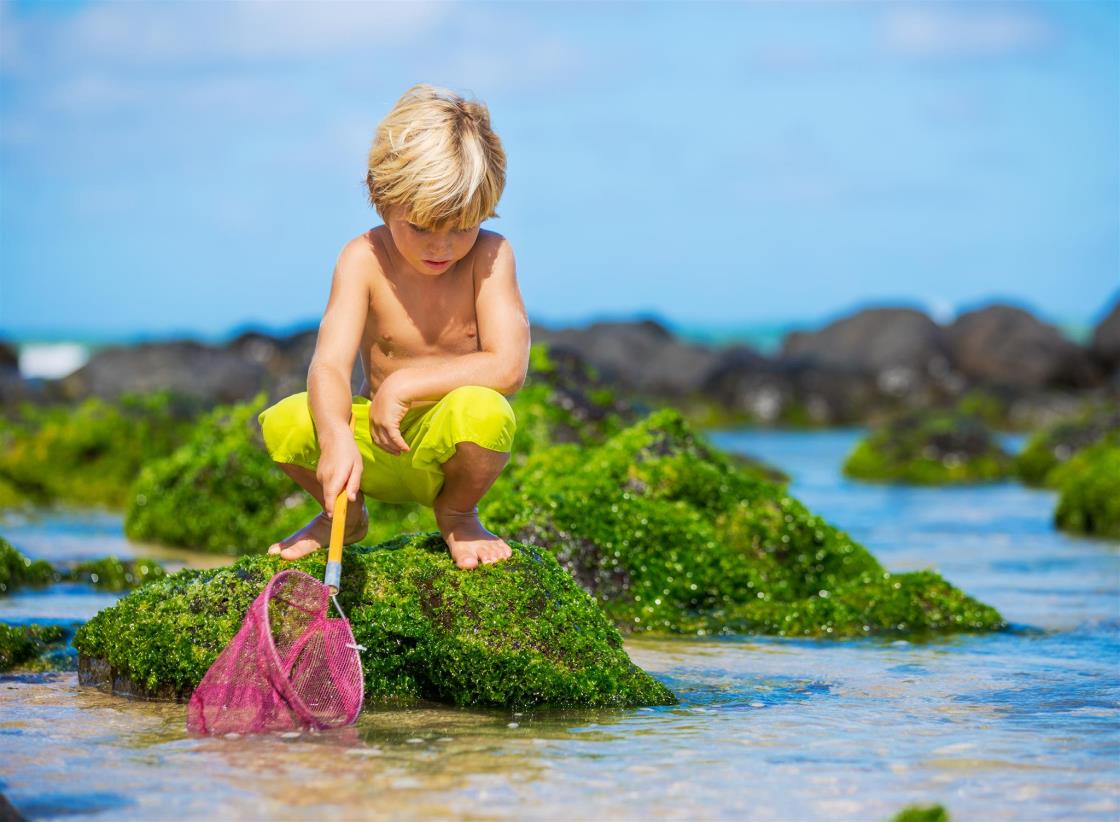
How to help kids save our oceans and be environmental heroes
Youth are the future of our planet – let's help them protect it
It is never too young to form good habits. When it comes to the future of our planet, youth have a lot at stake. It’s important for them to learn about protecting it early on. ©EpicStockMedia/shutterstock.com
18/02/2020
Kids are showing that age really is just a number when it comes to fighting climate change. While not every child can sail the Atlantic like Greta Thunberg, that’s not to say they can’t help in the fight against climate change.
Protecting our oceans is a key part of this fight. The world’s oceans benefit us in many different ways, providing us with food, influencing our climate and weather and offering us space for recreation. Yet, we take them for granted. Overfishing is reducing fish populations, threatening the supply of nutritious food and changing marine ecosystems, and millions of tonnes of plastic waste have already ended up in our oceans, killing or harming sea life. We need clean and healthy oceans to protect our own health and survival and to support future generations.
Every little action counts. Here are some simple ways to encourage children to protect our oceans and be environmental heroes.
Do a local clean up
Beach, lake or river clean-ups are a great way to get children involved in keeping our environment free from rubbish. Even a local park will benefit from a clean up. Less trash in the environment in general is less trash that could get washed away in our bodies of water. Gather the family together for a morning out in nature and spend some time picking up rubbish together – the kids will really see the difference it makes to an area that they play in.
Reuse disposed items
A great way to get kids involved in recycling is to encourage them to find other uses for old items. Instead of throwing something away, help them turn it into art!
Local school children in Rome, Italy recently participated in a “Creating art from waste” workshop held at FAO’s headquarters as part of the annual International Symposium on Fisheries Sustainability. The children took a trip to the local beach and were encouraged to pick up different types of debris that could be turned into artwork. “Trash isn’t just trash, because you can create loads of things with it. It ends up not being trash anymore, but...a beautiful piece of art,” one of the children said.
Alongside Roman artist, Publia Cruciani, the kids transformed the recovered material into awesome pieces of art, helping the trash find new life. “… Plastic …unfortunately surrounds us,” Publia explains. “While the children were collecting the debris, they were already using their imaginations to visualize what they could create.”


Kids from St George’s International School in Rome search the beach for discarded objects to turn into works of art. ©FAO/ Pier Paolo Cito
Reduce plastic use
More than 70 percent of the plastic we use does not get recycled, and a lot of this plastic waste is swept into our oceans. Cutting down on plastic is essential if we are truly to protect our oceans and rivers.
Often, pre-packaged fruits and vegetables at supermarkets are a big source of single-use plastic. Getting kids interested in growing their own food is a fun and educational way to cut down on plastic and shorten supply chains of foods, reducing the CO2 emitted in their transportation. Not only that, but getting kids involved in growing their own food is a great way to help them develop new skills, get out in nature and appreciate the planet.
At the General Lázaro Cárdenas school in Ajalpan, Mexico, 96 students planted, cared for and grew the food for their school lunches (with occasional help from their parents and teachers!). This has helped the kids maintain a good diet, develop livelihood skills and build environmental awareness. This school in Mexico is just one of FAO’s projects that promotes school gardens, helping to improve the nutrition of the local children, as well as bolster food security and protect the surrounding environment.
Eat sustainably sourced fish
Fish is an essential part of a balanced diet for many people across the globe. It is an indispensable source of protein, vitamins, minerals, and polyunsaturated omega-3 fatty acids. For some costal communities, fish is their primary source of food. Unsustainable fishing practices threaten the food security of these communities, both by taking away these marine resources but also by harming their livelihoods. Estimates suggest that about one in every five fish caught around the world every year comes from Illegal, Unreported and Unregulated (IUU) fishing, leading to overfishing and other issues critically damaging our oceans.
In your family, you can help by eating fish species that are more abundant, rather than those at risk of being overfished like Atlantic Bluefin tuna, Atlantic mackerel and capelin. You can also buy fish that has been caught or farmed sustainably, such as eco-labeled or certified fish. Ensuring that your fish comes from a certified source can make a real difference.

Fish is a vital source of nutrition and income for many people in the world. ©FAO/Emre Tazegul
There isn’t just one approach to keeping our oceans clean and our planet healthy - everything is interconnected, and every little bit helps. Kids can start young in making sustainable choices and forming habits that are beneficial for our future. It is vital that we engage both young and old in making sustainable choices that help transform our food systems. We all have a part to play in achieving the Sustainable Development Goals and the better future it envisions.
Related links
Learn more:

